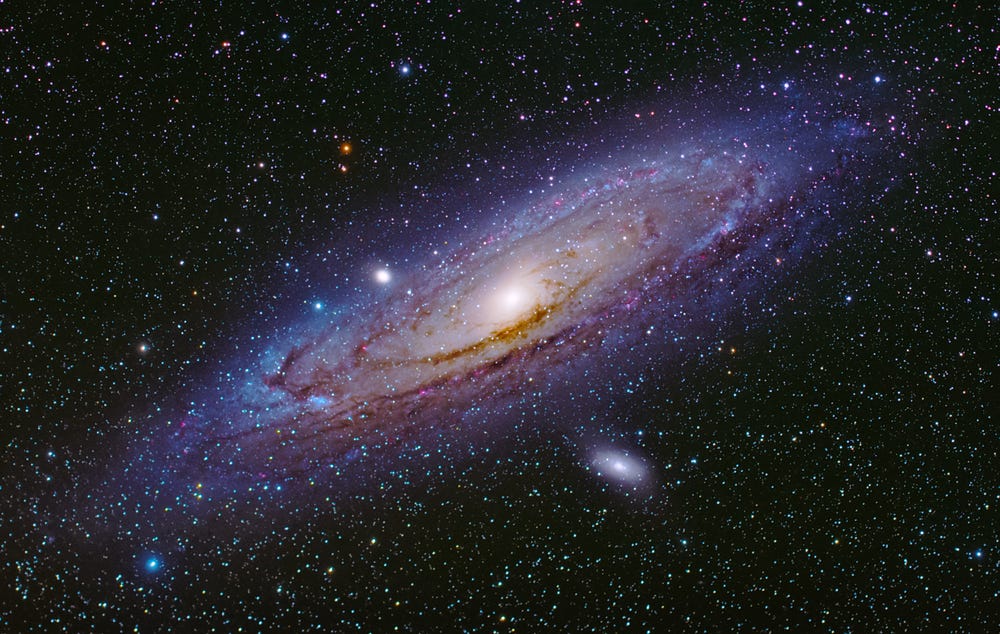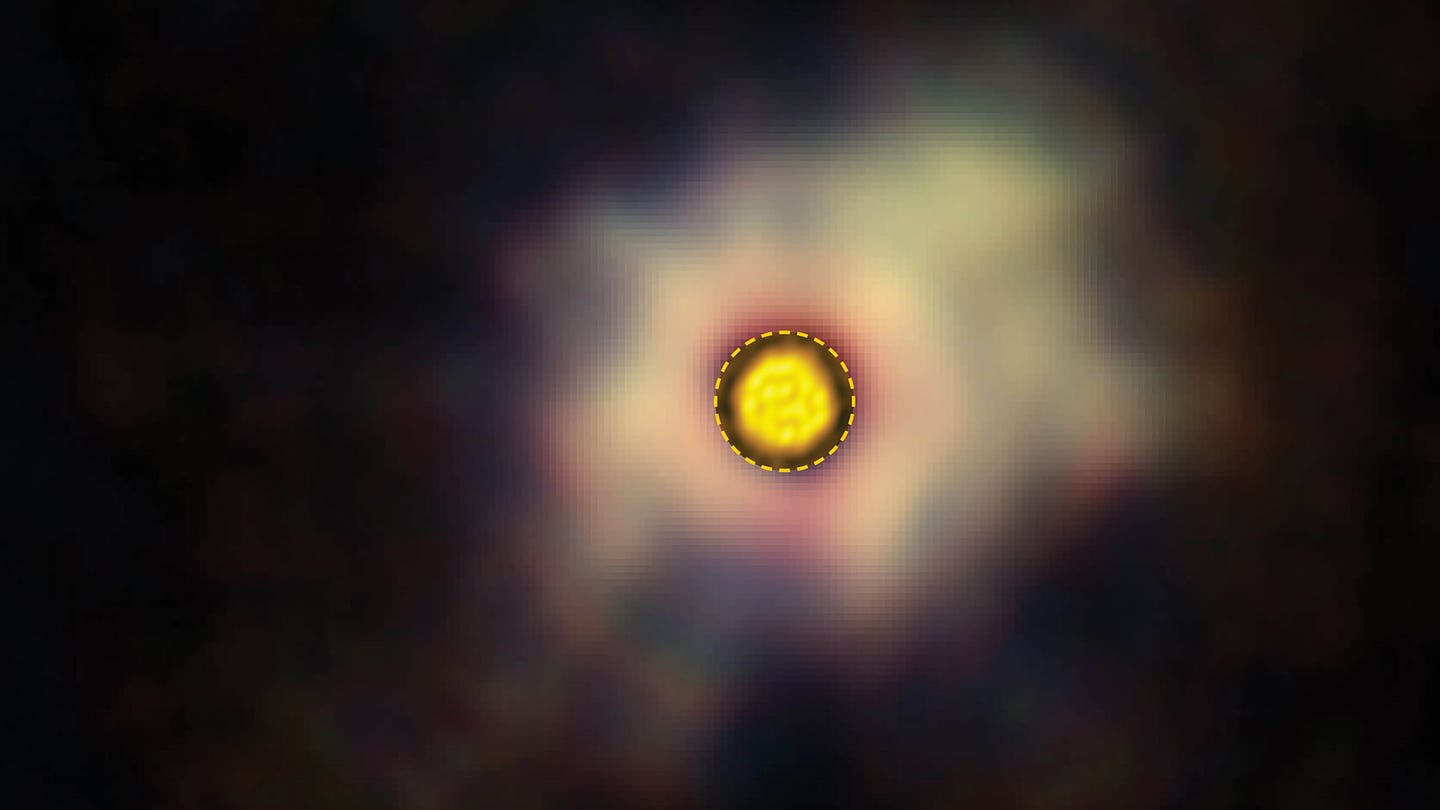Astronomers discovered why spiral galaxies like our Milky Way are so rare
Scientists have long puzzled over the absence of spiral galaxies like the Milky Way in our Local Universe known as the Supergalactic Plane

[Nov. 30, 2023: JJ Shavit, The Brighter Side of News]
Artistic representation of the spiral Milky Way galaxy. (CREDIT: Antares_StarExplorer/Shutterstock)
Astrophysicists have long puzzled over the conspicuous absence of spiral galaxies like our own Milky Way in a vast region of our Local Universe known as the Supergalactic Plane. This cosmic conundrum has left scientists searching for answers, and now, a breakthrough study led by an international team of researchers, with co-leaders from Durham University, UK, and the University of Helsinki, Finland, has shed light on the enigma.
The Supergalactic Plane, an immense, flat structure stretching nearly a billion light-years across, encompasses our Milky Way galaxy. Within this expansive region, the Supergalactic Plane, galaxies abound, but what's notably missing are the familiar bright disk galaxies adorned with graceful spiral arms. Instead, the dominant celestial residents here are the elliptical galaxies, smooth and devoid of any discernible internal spiral structure.
The research findings, published in the prestigious journal Nature Astronomy, unveil the underlying reason for this intriguing disparity. It appears that the distinct distribution of elliptical and disk galaxies in the Supergalactic Plane arises naturally due to the contrasting environments found both within and outside this cosmic highway.
Within the Supergalactic Plane, dense galaxy clusters exert their gravitational influence, leading to frequent interactions and mergers among galaxies. These interactions have a transformative effect on spiral galaxies, gradually reshaping them into elliptical galaxies.
Related Stories
Elliptical galaxies, unlike their spiral counterparts, exhibit a smooth, featureless appearance without spiral arms. Additionally, this cosmic reshuffling of galactic structures also contributes to the formation and growth of supermassive black holes within these regions.
In contrast, galaxies residing outside the Supergalactic Plane experience a relatively peaceful existence, evolving in relative isolation. This tranquil environment enables them to maintain their spiral structure, escaping the dramatic transformations that befall their counterparts within the Supergalactic Plane.
The Milky Way, our very own galaxy, is part of the enigmatic Supergalactic Plane, which houses numerous massive galaxy clusters and thousands of individual galaxies. Strikingly, the vast majority of galaxies found within this cosmic superhighway are elliptical galaxies, a conspicuous deviation from the prevalence of spiral galaxies found elsewhere.
Artist concept of the Milky Way. (CREDIT: NASA/JPL-Caltech)
To unravel this cosmic mystery, the research team turned to the SIBELIUS (Simulations Beyond the Local Universe) supercomputer simulation. This cutting-edge simulation meticulously traces the evolution of the Universe over a staggering 13.8 billion years, spanning from its early moments to the present day.
What sets SIBELIUS apart from most cosmological simulations is its unique capability to accurately replicate observed cosmic structures, including the elusive Supergalactic Plane. While many simulations consider random patches of the Universe that cannot be directly compared to real-world observations, SIBELIUS strives for precision, aligning its simulated structures with those observed through powerful telescopes.
Distribution of the brightest galaxies in the Local Universe, observed in the 2MASS survey (left panel) and reproduced in the SIBELIUS simulation (right panel). Both panels show projections in supergalactic coordinates, out to approximately 100 Megaparsec (Mpc). The nearly vertical empty stripe represents the region of the sky hidden behind our own Milky Way galaxy. The simulation accurately reproduces the structures seen in the Local Universe. (CREDIT: Dr Till Sawala)
Professor Carlos Frenk, a co-author of the study and the Ogden Professor of Fundamental Physics in the Institute for Computational Cosmology at Durham University, emphasized the significance of their findings: "The distribution of galaxies in the Supergalactic Plane is indeed remarkable. It is rare but not a complete anomaly: our simulation reveals the intimate details of the formation of galaxies such as the transformation of spirals into ellipticals through galaxy mergers. Further, the simulation shows that our standard model of the Universe, based on the idea that most of its mass is cold dark matter, can reproduce the most remarkable structures in the Universe, including the spectacular structure of which the Milky Way is part."
This remarkable separation between spiral and elliptical galaxies within the Local Universe, a puzzle that has intrigued scientists since the 1960s, now features prominently on a list of "cosmic anomalies" compiled by renowned cosmologist and 2019 Nobel laureate Professor Jim Peebles.
Image showing an elliptical galaxy (left) and a spiral galaxy (right) includes near-infrared light from the James Webb Space Telescope, and ultraviolet and visible light from the Hubble Space Telescope. (CREDIT: NASA, ESA, CSA, Rogier Windhorst (ASU), William Keel (University of Alabama), Stuart Wyithe (University of Melbourne), JWST PEARLS Team, Alyssa Pagan (STScI))
Dr. Till Sawala, the lead author of the study and a postdoctoral researcher at both Durham University and the University of Helsinki, recalled his eureka moment: "By chance, I was invited to a symposium in honor of Jim Peebles last December at Durham, where he presented the problem in his lecture. And I realized that we had already completed a simulation that might contain the answer. Our research shows that the known mechanisms of galaxy evolution also work in this unique cosmic environment."
The supercomputer simulations that enabled these groundbreaking discoveries were carried out on the Cosmology Machine (COSMA 8) supercomputer, hosted by the Institute for Computational Cosmology at Durham University on behalf of the UK’s DiRAC High-Performance Computing facility. Additionally, the research team utilized CSC's Mahti supercomputer in Finland to further refine their findings.
Distributions of disks, intermediates and ellipticals in the Local Universe up to z = 0.02. (CREDIT: Nature Astronomy)
In essence, this study not only unravels the longstanding mystery of the Supergalactic Plane's dearth of spiral galaxies but also underscores the profound impact of environmental factors on galactic evolution. The transformation of spirals into ellipticals through galactic interactions and mergers, as revealed by the SIBELIUS simulation, serves as a testament to the intricate dance of cosmic forces that shape the cosmos we inhabit.
The research was funded by the European Research Council, the Academy of Finland and the UK Science and Technology Facilities Council.
Note: Materials provided above by The Brighter Side of News. Content may be edited for style and length.
Like these kind of feel good stories? Get the Brighter Side of News' newsletter.



